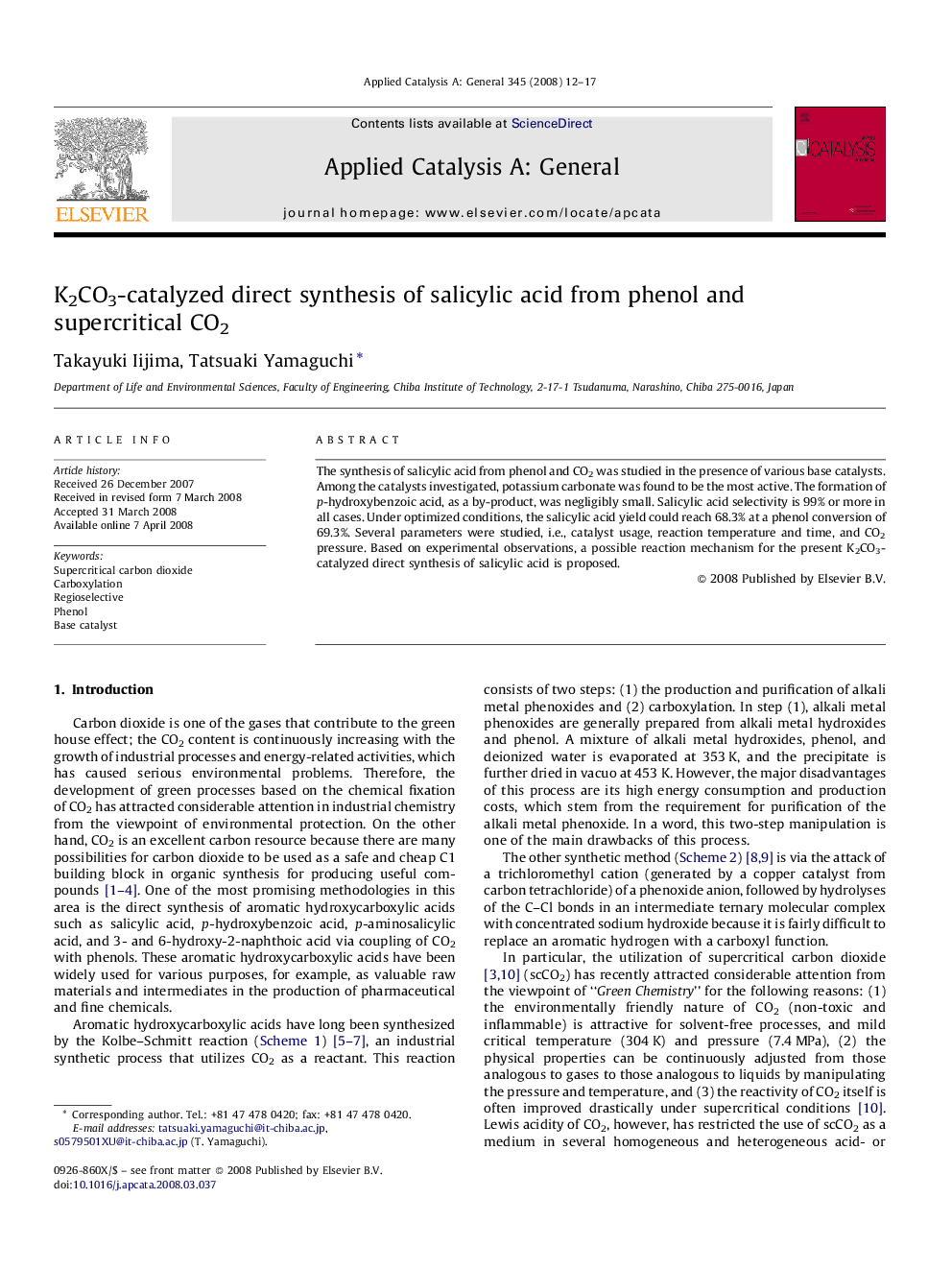| Article ID | Journal | Published Year | Pages | File Type |
|---|---|---|---|---|
| 43320 | Applied Catalysis A: General | 2008 | 6 Pages |
The synthesis of salicylic acid from phenol and CO2 was studied in the presence of various base catalysts. Among the catalysts investigated, potassium carbonate was found to be the most active. The formation of p-hydroxybenzoic acid, as a by-product, was negligibly small. Salicylic acid selectivity is 99% or more in all cases. Under optimized conditions, the salicylic acid yield could reach 68.3% at a phenol conversion of 69.3%. Several parameters were studied, i.e., catalyst usage, reaction temperature and time, and CO2 pressure. Based on experimental observations, a possible reaction mechanism for the present K2CO3-catalyzed direct synthesis of salicylic acid is proposed.
Graphical abstractThe synthesis of salicylic acid from CO2 and phenol was performed with potassium carbonate as a base catalyst.Under optimized conditions, the salicylic acid yield could reach 68.3% at a CO2 pressure of 8 MPa, while the increase in the formation of the by-product, p-hydroxybenzoic acid, was not substantial in all cases. Figure optionsDownload full-size imageDownload as PowerPoint slide
